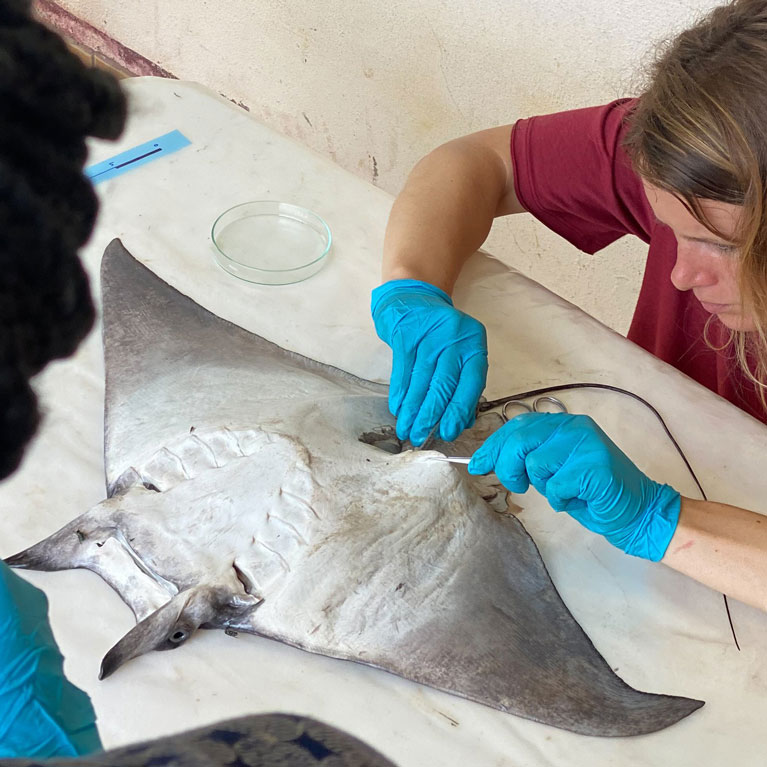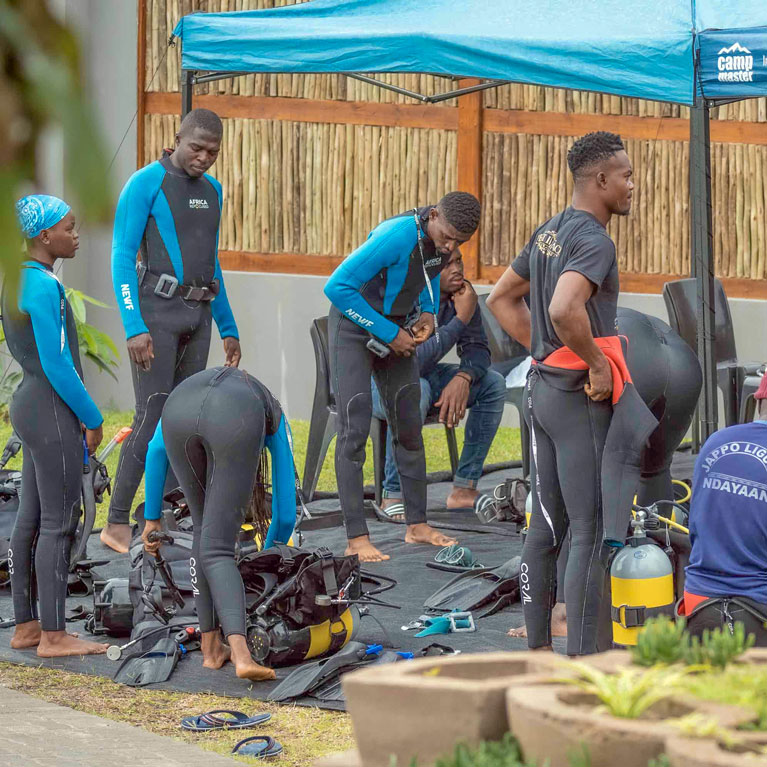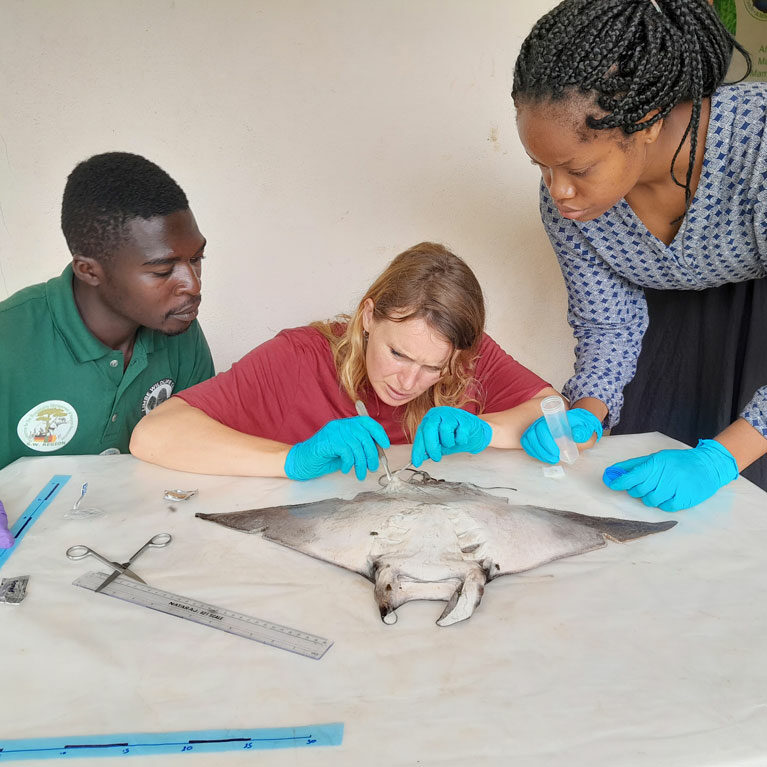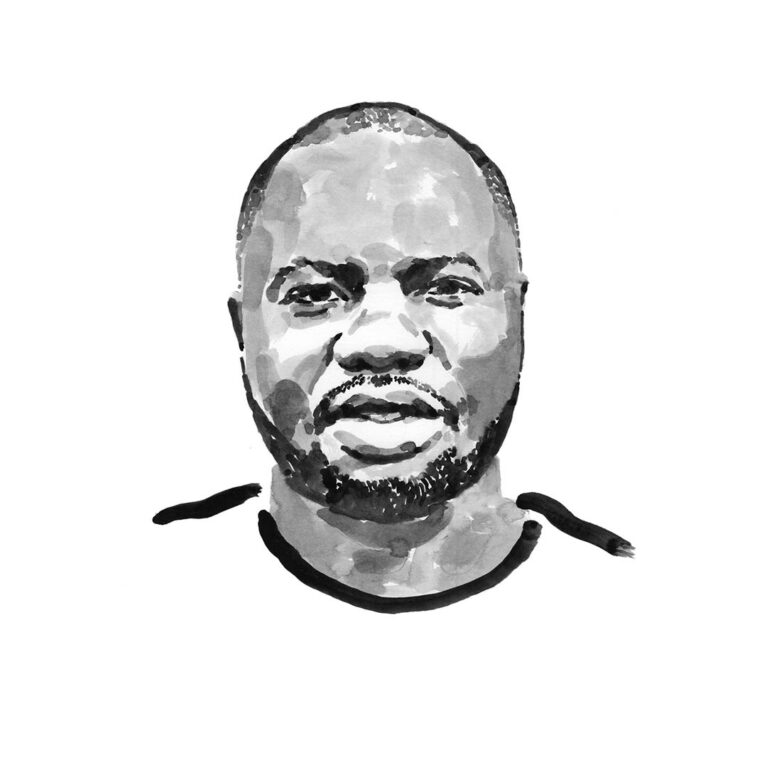Combining community and genetics for conservation in Cameroon
Aristide created a citizen science platform and mobile app for fishers across Cameroon’s 400 km coastline to record sightings of sharks, rays and marine life. These photos are uploaded to iNaturalist where they are identified and will serve to create Cameroon’s first elasmobranch atlas. Together with his team, Aristide ensures data are being uploaded, visits fish landing sites to assess bycatch and measure sharks, and scours the beaches to check for strandings and sea turtle nests. He collects tissue samples of threatened species in these visits that can give more insights into the diversity, population size and structure of vulnerable sharks.
A native Cameroonian, I was born in the coastal city of Douala and spent my childhood there. I enjoyed swimming with my friends despite my parents’ ban. I grew up in a social environment where all animals were perceived primarily as meat. My perception of wildlife changed during an ecology class of my Master’s programme, when I realised that wildlife species may go extinct if they are exploited unsustainably. I took the initiative to study one of them, the African manatee, in a protected area called Lake Ossa. It was my first encounter with a live animal species in the...



Combining community and genetics for conservation in Cameroon
In this project, we generate scientific data that will be used to inform policy-makers about the status of elasmobranchs in Cameroon and convince them to enact legal protection. We also aim to make local communities aware of the conservation status of threatened species of sharks and rays.
Elasmobranchs are the most targeted aquatic mega-fauna in Cameroon, representing 97% of the by-catch we documented. They are also poorly known. So far we have recorded 33 species, of which 11 are threatened, including the extremely rare Mobula rochebrunei. However, none of them are protected by Cameroonian law. If nothing is done, some may disappear. We will use citizen science and genetic research to improve knowledge of these species, which will inform policies and management.
In Cameroon, aquatic mega-fauna species are poorly known and mostly seen as a source of protein. Sharks and rays appear to be the most threatened, representing about 97% of the total mega-fauna by-catch along the coast of Cameroon. Until recently, it was not clear which elasmobranch species are present along this coast. In 2015 I initiated the SIREN citizen science project, which involves volunteer fishers using the SIREN mobile app to document their sightings and landings of aquatic mega-fauna along the coast. Through this initiative, we have identified 33 elasmobranch species, 11 of which are categorised as Critically Endangered, Endangered or Vulnerable by the IUCN Red List of Threatened Species. As none of the species are legally protected in Cameroon, many fishers catch, either intentionally or unintentionally, thousands of sharks and rays every year without being concerned about legal consequences. These animals are sold openly in various forms – fresh, frozen or smoked. If nothing is done, the populations of many of these species may disappear before they are studied. We recently ‘rediscovered’ a species we believe was Mobula rochebrunei, an extremely rare mobula ray that had not been documented since it was described in 1960. We aim to improve scientific knowledge about elasmobranchs, which will be useful to orient conservation strategies. We will also increase local awareness about these species. This work is a step towards a broader project to establish community marine protected areas in coastal zones of Cameroon that have high conservation value. The information from this study will be combined with what is known about other mega-fauna species in Cameroon to derive a broader view of the value of conservation. The combined information will also be useful for generating a national coastal and marine management plan.
The aim of this project is to establish a centralised base of scientific knowledge that will support the conservation of shark and ray populations along the coast of Cameroon, while taking into account the interests of the local community. My team and I hope to achieve the following objectives to meet this goal:
- to double local capacity to generate quality and cost-effective data collectively on elasmobranchs along the Cameroon coast, which will contribute to our knowledge of these species;
- to establish baseline scientific knowledge by creating the first comprehensive atlas of the elasmobranchs of Cameroon, as well as other publications that will cover information such as the distribution, by-catch frequencies, sex ratios and average body sizes of these species;
- to determine the genetic identity and population status of target species;
- to raise the national legal status of threatened elasmobranch species;
- to make local people more aware of the importance and conservation status of the threatened elasmobranch species of Cameroon.

